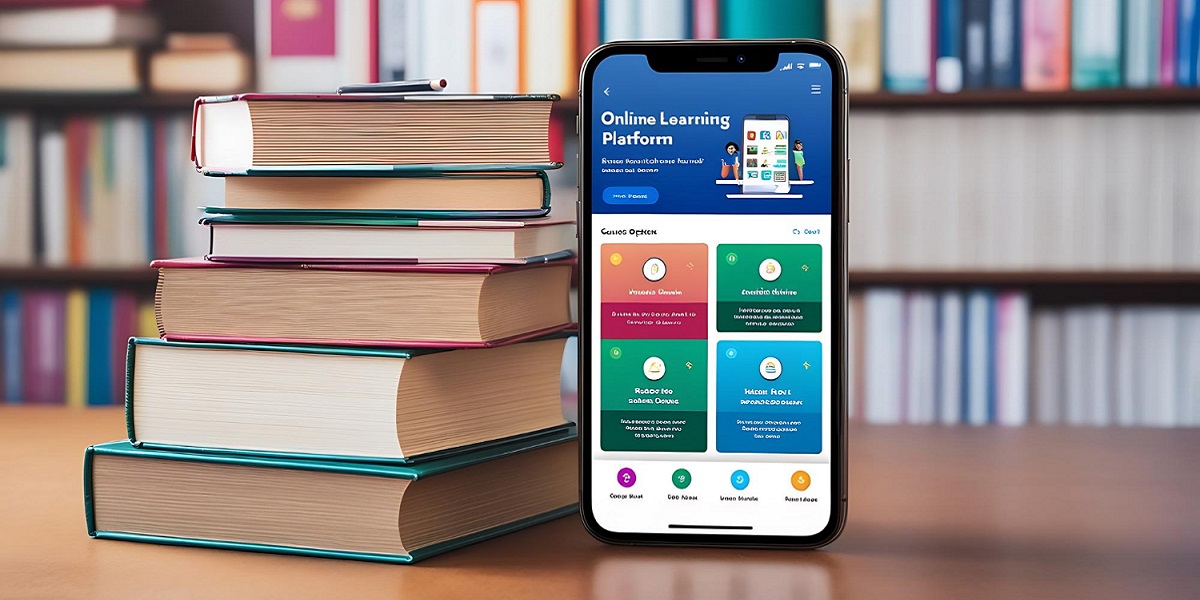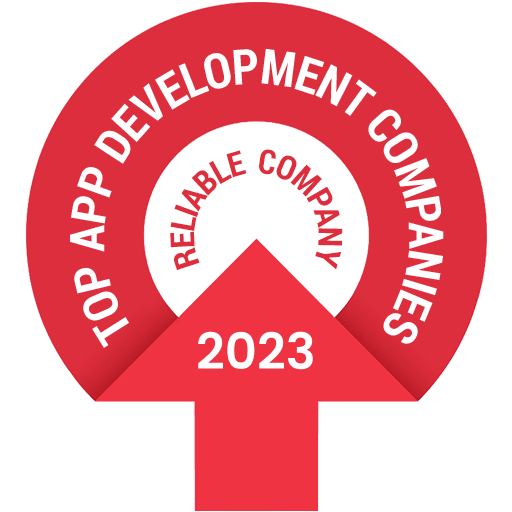
The Role of Mobile Apps in Modern School Management Systems
- By Peter Karl
- 15-09-2025
- Mobile Apps
As the educational sphere becomes a more rapidly changing one, schools are feeling an increasing pressure to modernize their processes, improve communication, and how to make learning more entertaining. Outdated practices- such as handwritten attendance records, printed correspondents, or text messages- can no longer take care of the needs of tech-savvy parents, students, and administrators.
Mobile apps on school management systems have also since become transformative applications- an extension of the traditional ERP solution that brings the whole school system into the smartphones of teachers, students and parents. These applications are drastically changing the way schools operate as they can track real-time attendance, provide immediate feedback regarding the homework, and be notified about the exam schedule and fees.
The magnitude of this change is reflected in the growth of the global school management system market: it will increase by 2032 to USD 77.57 billion, or 17.1% annually, in comparison with USD 21.94 billion in 2024. Such an increase translates to the fact that mobile solutions are no longer an option, they are becoming the fabric of new school administration.
In the following paper, we will discuss how mobile apps became an important element of a contemporary school management system, how it all started, what are essential advantages of mobile apps in a school management system, what mobile apps should include, what challenges it faces and what innovations await the future.
Evolution of Education Management Systems
Manual operations became the tool of the trade in schools where schools had to use forms and permits to carry out their daily activities. The school-administration comprised paper-based report cards, circulars, attendance registers, and cash fee-payments. Although successful in a conventional way, these systems consumed a lot of time, were inaccurate, and non-transparent.
First steps were modernization by utilizing digital record-keeping and simple school ERP (Enterprise Resource Planning) software. These systems enabled institutions to convert such data as school child information, fee tables and schedules. Accessibility, however, was only limited to the computers and therefore teachers and parents still had to be physically present in the school or operate desktops in order to access information.
The development of mobile phones and applications within the past ten years has transformed the scene drastically. The introduction of mobile technology created flexibility and convenience as it made school management tools in the hands of the stakeholders. The parents were allowed to know real-time attendance, teachers to update their homework wherever they were and administrators to send announcements very quickly.
The translation is facilitated by the COVID-19 pandemic that has speeded up the process. Schools shifted to online and mobile applications were the key to keeping working and communicating. They covered the distance between teachers, students, and parents in lockdowns, thus, demonstrating their usefulness beyond convenience.
Modern-day education management systems have become mobile-first - where educational applications are not merely add-ons, but the centre of the school operations. Such transformation has formed the basis of the popularization of the mobile apps as a default educational school concept.
Importance of Mobile Apps in School Management
The role of school mobile apps in school management does not lie in digitizing, but, on the contrary, they have become the necessary elements of improving the efficiency, accessibility and transparency of education. The significance of theirs can be comprehended in three general directions:
1. Easy and Time Saving
Mobile apps are less cumbersome in carrying out daily administrative activities of teachers, parents, and students. The teacher no longer needs to spend several hours on manual labor, e.g. taking attendance, giving out homework or informing parents; it all can be done in several taps. This productivity liberates a considerable amount of time to the teacher to teach rather than do paperwork.
2. Improved Accessibility
Unlike the traditional ERP solution where one is restricted to a desktop; mobile apps are accessible anytime and anywhere. It lets parents know about the progress of their child, teachers to operate their classes remotely, and students to view learning materials, any time, anywhere. This accessibility has been particularly effective in the tier-two or rural urban centers as they tend to be the schools with least resources- mobile apps overcome these deficiencies to a great extent.
3. Agency and Transparency
The use of mobile devices creates visibility to the operations of the school. Parents also get real-time alerts on attendance, exam timetable and fees which decreases the communication gap between schools and families. Such an engagement will help the stakeholders to work better together and increase trust in the institution.
In brief, mobile applications have achieved the leap of changing the school management industry as an addition to its backbone, where schools can cope with the demands of the modern digitalized world.
Key Benefits of Mobile Apps in School Management
Smartphones and mobile applications have transformed the way schools are run and made administration smarter, quicker and student-centered. These benefits are inclusive across all the circularities which include teachers, parents, students, and administrators. The greatest benefits can be listed below:
1. Automation and Effectiveness
Automatization of performing routine tasks is one of the greatest benefits of mobile applications. The obviously manual attendance tracking processes, report generation and fee management processes that used to take hours to accomplish are now handled in a couple of minutes. This minimizes the number of errors, doubling-up, and means that teachers and administrators can pay attention to a more valuable thing, including enhancing the learning experience.
2. Convenience and Ease of Access Answers
The mobile applications go further to take education management systems out of the classrooms and office tables. Parents could verify the attendance or pay fees via smartphone and teachers could assign homework or change grades remotely. In case of schools within the tier-two cities or remotely located schools, mobile apps can inspire the sense of inclusivity and inclusion since even minimal infrastructure can be easily accessed.
3. Real-Time Communication
Communication in schools has never been an easy task. The gap is filled with mobile applications by providing real-time push notifications, alerts, and announcements. Anything; be it a last minute shift of schedule, delay of a bus, or revision of examination, schools can now be able to communicate it immediately to parents and students. This urgency enhances trustworthiness and assures everyone to remain in agreement.
4. Individualised Learning and Engagement
Contemporary apps are not only beneficial in terms of administration, but learning, too. The amount of personalised dashboards now available to students, individualised assignments, and progress monitoring features is increasing on many platforms. This will aid schools to serve learning needs of individuals and improve student-engagement and grades.
5. Cost-Effective and Sustainable
Mobile apps allow schools to be more environmentally friendly and affordable because reliance on paper, printing, and manual record-keeping are also minimized. Instead of printed circulars, digital notices are now used, fee payments no longer have to be done in person with transaction overhead, and report cards can be now sent electronically with no need to print anything. Long-term this change can not only eliminate expenses but also work with the overall sustainable environment.
Core Features of Mobile School Management Apps
The main difference with mobile apps and the more traditional school ERP system is that mobile apps allow core features to be delivered right to those in the pocket. These characteristics give the teachers, parents, and students the capability to remain connected and informed in real time.
1. Attendance Tracking
Conducting the attendance is an extremely time-consuming classroom activity. This is made easier with the use of mobile applications where staff members can record attendance through several clicks. A parent would also be able to see the instant updates when a student is absent, minimizing the loss of information. It is even more efficient that in some apps, administrators can create daily, weekly or monthly reports automatically.
2. Sharing of Homework and Assignments
With mobile applications, teachers have a devoted area to post up homework, studying materials and assignments. Parents can monitor the child's progress and students can access them whenever they want. This removes the element of lost notebooks, or instruction lost and thus keeps the academic affairs transparent and properly managed.
3. Payments of Fee and Finance Management
Paper-based splice management causes delay, and might result in the occurrence of errors. This is done conveniently with mobile apps that allow parents to pay fees and get immediate receipts as well as follow up on pending dues. To schools, this allows shorter collection cycles and a reduced workload on administration.
4. Grade Management and exam Results
Waiting times to get printed report cards are no more. Through mobile apps, schools can make results of exams publications on the computer. Grades are accessible in a timely manner to parents and students, comparison of performance can be tracked over a term and records can even be downloaded. This openness promotes higher responsibility and motivation among the students.
5. Program and Schedule
Schools can use mobile apps to publish digital schedules which a school can update in real time. Parents and students are automatically notified in case of class rescheduling or a need for substitution. This saves on confusion and ensures that daily activities are not disorganized.
6. Notifications of Transport and Safety
Most smartphone applications in the market have combined integration to the school transport to allow locating the bus and real-time safety warnings. The parents may monitor the journey their child makes in real-time and the schools may update the family on any delays, or route alterations in-time. This first makes life convenient, even more than that, it makes it safer among students.
Security and Data Protection in Mobile School Apps
With schools adopting mobile applications to perform their academic and administrative duties, data security is also a key issue. Such applications deal with sensitive data- including student details, fee collection, health-related data, and transport data- not securing which may jeopardize privacy.
The present day school administration software is developed to be multi-level secured. During encryption communication, data moving among the app and servers is safe and not subjected to unauthorized access. Isolated role-based access control restricts visibility of information further to ensure that parents, teachers and administrators only view what is pertinent to their roles.
It also has safe payment gateways which are an added advantage as parents feel secure when carrying out online fees transactions. In addition to this, any control or regulation like the General Data Protection Regulation (GDPR) and new law of data protection in new countries like India is subject to another accountability.
The security and privacy achieved with mobile school apps do not only promote confidence between the parents and the staff but also ensure the integrity of the school is maintained. This must have to protect proposes that in contemporary education, technology is an amenability and not a hazard.
Challenges in Adopting Mobile Apps
Although mobile apps have enormous benefits in the management of schools, adoption of these apps does not come without challenges. There are various challenges encountered by schools which may impede or complicate implementation.
Implementation Cost
There are several institutions particularly the smaller or the rural schools that cannot afford the initial investment towards the deployment of mobile-based systems. Costs One-off licensing cost, training, customization and maintenance. These expenses can be overwhelming in case of improper budgeting.
Change resistance
Traditionally trained faculty, parents, and administrators can be uncomfortable with the trend toward online learning. Adoption may be slower due to lack of technical ability or fear of technology and training and awareness programs are needed to facilitate the transition.
Internet and Device Accessibility
Smartphones and stable internet connections are readily available to not every parent or student. This digital divide has the potential to lock the school out of taking full advantage of mobile apps when the region is remote or underdeveloped, and some stakeholders are thereby left out.
Privacy with Data Issues
Privacy is one of the burning issues with student and financial data being stored on digital platforms. Students should also be taught to ask smart questions and be selective on their choice of providers of educational apps.
Conclusion
Mobile application has revolutionized the functionality of schools, which is providing them efficiency, accessibility and transparency in education administration. As an aid to automating routine tasks, real-time communication tools, and personalizing the learning experience, these apps have become an essential part of the modern school.
Though some issues including cost, resistance to change, and data privacy remain difficult to overcome, in the long-term view, there are many more advantages than disadvantages. As technology continues to enhance, mobile apps will become even better taking into consideration incorporation of AI, cloud computing, and personalized learning solutions in line with the future needs.
In the case of schools, the days of it being optional to use mobile applications is no longer the issue because it must be and should be seen as a strategic necessity. Institutions that embrace these tools will guarantee seamless operations, well-engaged parents and students as well as improved learner outcomes, and a more connected and future-proof education ecosystem overall.
Recent blog

The Role of Mobile Apps in Modern School Management Systems
Mobile Apps | 15-09-2025.jpg)
Why Specialized Ecommerce SEO Companies Scale Growth Faster?
SEO | 12-09-2025.jpg)




